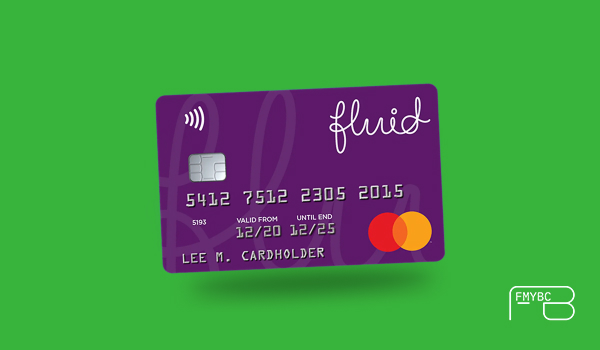The Fluid Credit Card—issued by NewDay—remains a practical choice. With its short-term 0% balance transfer offer, no annual fee, and easy digital management, it provides flexibility for those who need a breathing space. However, it isn’t a perfect fit for every type of borrower. Below is a closer look at what the card offers, how it compares with others in the same category, and whether it really delivers value.
Key Features at a Glance
- 0% Balance Transfers – Transfers completed within the first 60 days benefit from 0% interest for up to 9 months. A transfer fee of 3% applies.
- Flexible Credit Limits – Limits start at £250 and can go up to £4,000, depending on individual credit standing.
- No Annual Fee – Unlike some cards that charge a yearly fee, Fluid keeps it simple with no ongoing cost.
- Digital Account Tools – The mobile app makes it easy to track spending, check statements, make payments, and receive real-time alerts.
- Eligibility Checker – Applicants can gauge approval chances through a soft search tool that doesn’t affect their credit rating.
These features make Fluid best suited to people who need short-term debt management rather than a card for everyday spending.
How the Fluid Card Works
The standout benefit of Fluid is its balance transfer function. By moving existing card balances to Fluid, cardholders avoid interest charges for nine months. This temporary break can make it easier to pay down debt more quickly.
However, the promotional rate is only temporary. Once the nine months are over, the interest rate jumps to 34.9% variable APR, which is high compared to many other UK cards. For that reason, the card is only cost-effective if the transferred balance is cleared within the interest-free period.
It’s also important to remember that cash withdrawals, overseas use, and late payments come with extra charges. This makes the card less appealing for travel or day-to-day purchases.
How It Compares with Other Cards
| Card | 0% Balance Transfer Period | Typical APR (Variable) | Annual Fee |
| Fluid Credit Card | 9 months | 34.9% | £0 |
| Barclaycard Platinum | Up to 24 months | 24.9% | £0 |
| Tesco Bank Balance Transfer | 16 months | 23.9% | £0 |
This comparison highlights Fluid’s main trade-off. While it is easier to get accepted for—especially for those with weaker credit histories—the 0% period is much shorter than what bigger players like Barclaycard or Tesco offer.
Best Situations for Use
The Fluid Credit Card works best in specific cases, such as:
- Debt Consolidation – Bringing multiple balances into one account to simplify repayments.
- Credit Rebuilding – Using the card responsibly to improve a damaged credit file.
- Short-Term Breathing Space – Taking advantage of nine months without interest to get finances back on track.
If, however, you need more than nine months to repay your balance, longer-term options on the market may be a better fit.
Costs Versus Benefits
The value of Fluid comes down to discipline. For example, moving £2,000 in debt to the card means paying a £60 fee (3%). In return, the cardholder could save up to £400 in interest during the nine-month period. But if that same debt is still unpaid when the promotion ends, the high interest rate will quickly undo those savings.
For that reason, the Fluid Credit Card is most effective for borrowers who can commit to clearing their transferred balance within the set timeframe.
Final Thoughts
The Fluid Credit Card UK stands out as a useful short-term option for debt consolidation and credit building. It has no annual fee, a user-friendly app, and accessible approval. However, the short 0% period and steep APR make it a card that needs careful handling. Used wisely, it can deliver genuine financial relief—but without a repayment plan, it could become costly.



 Fluid Credit Card Guide: Maximize Your Balance Transfer Strategy Without Paying Hidden Interest <p style='font-size:14px;'>A step-by-step guide to using the Fluid credit card wisely — and avoiding the common mistakes many UK borrowers make.</p>
Fluid Credit Card Guide: Maximize Your Balance Transfer Strategy Without Paying Hidden Interest <p style='font-size:14px;'>A step-by-step guide to using the Fluid credit card wisely — and avoiding the common mistakes many UK borrowers make.</p>  How to Get the Most Out of the Santander Edge Credit Card <p style='font-size:14px;'>A hands-on guide to maximizing cashback, avoiding hidden costs and comparing smarter options in the UK market.</p>
How to Get the Most Out of the Santander Edge Credit Card <p style='font-size:14px;'>A hands-on guide to maximizing cashback, avoiding hidden costs and comparing smarter options in the UK market.</p>  Advanced Guide to Getting the Most Out of the Funding Circle Business Cashback Card <p style='font-size:14px;'>How to turn a simple business credit card into a smarter cash-flow tool with rewards that support long-term growth</p>
Advanced Guide to Getting the Most Out of the Funding Circle Business Cashback Card <p style='font-size:14px;'>How to turn a simple business credit card into a smarter cash-flow tool with rewards that support long-term growth</p>